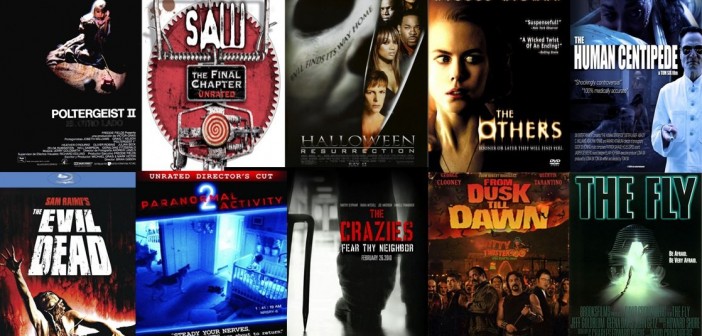No matter how much we fear, we keep coming back for more. Moviegoers for over a century now have become increasingly demanding, and moviemakers have never stopped stretching the possibilities of visual entertainment. There are two reasons why the cinema screen is so big, explained one movie critic. One: it’s because there’s a lot of people watching it. Second: it’s to put each individual into movie itself, as if he were wearing a pair of virtual reality goggles and it was him in the lead role. Imagine if this technology were applied to the horror genre.
Imagine putting yourself in the lead role of these horror films, known for their most creative plots of sudden twists. Shall you survive the virtual realm of terror?
In 2007, a film adaptation of the comic book mini-series “30 Days of Night” (IDW Publishing, 2002) sent shudders up and down the spine of viewers across the United States. It starred U.S. heartthrob Josh Hartnett and Australian actress Melissa George. The story begins in the northernmost town of Barrow, Alaska, known for its 67 days of winter darkness. A tribe of vampires aboard a seaborne tanker stranded amidst thick ice floes stumble into the peaceful town and, taking advantage of the prolonged darkness, wreak havoc and feast upon its inhabitants. A handful of survivors trapped in Barrow huddle and scurry to escape detection by hiding in the attic of one of the abandoned homes. What makes this film very fascinating is not the vampires, but the predicament that compels the human spirit to preserve and protect its own even when bleached under insurmountable supernatural odds. This Senator International-Columbia Pictures film was directed by David Slade and Sam Raimi, the director who worked on the “Spiderman” pictures starring Tobey McGuire and such horror classics like the “Evil Dead” trilogy and “The Grudge.”
In the 2006 movie “Silent Hill” (TriStar Pictures), imagine yourself a mother frantically searching for her missing child. You skulk around a mysterious town you thought was empty but, when darkness falls, brings out malevolent creatures that only exist to inflict sadistic torture. The darkness, unlike in the normal world that rules the night, unpredictably comes in intervals after a few hours of daylight. Although the movie merely made mild success in the box office, critics hailed it for its stunning imagery and visual effects. But its most impressive feature is its rendition of the afterlife. While we have always envisioned Hell in chaotic fire and brimstone, “Silent Hill” portrayed it as an abandoned mining town of rising toxic fumes ruled by a vindictive evil spirit.
While in the subject of malevolent and vindictive evil spirits, how long would you last in a house out in the backwoods haunted by one? In the movie Evil Dead (New Line Cinema, 1981), written, directed, and produced by Sam Raimi, only one out of five Michigan State University friends made it out alive. In its sequel Evil Dead II (Rosebud Pictures, 1987), Ash, the survivor in its prequel, played by Bruce Campbell, almost did not.
“Is there really a Blair Witch?” This question continues to be raised at times whenever the movie “The Blair Witch Project” (Artisan Entertainment, 1999) comes up in conversations. The story was presented in a form of a documentary that leaves the viewer guessing and shocked as to what happened to its makers. The film was an innovative success: from a budget of $500,000 to $700,000, it grossed a worldwide $248,639,099 in the box office along with international acclaim. This movie truly brings the viewer into the scene, perhaps more than any advanced visual effects and imagery can accomplish. The style of “The Blair Witch Project” can be associated with the 1938 Orson Welles radio classic “War of the Worlds” that sent the United States-earth’s most powerful nation-into mass hysteria.
Imagine yourself traveling in the Yorkshire moors of England and getting attacked by a werewolf. You miraculous survive. But entailing the survival is living the rest of your life under the werewolf curse: that every full moon you undergo a transformation that seeks to feed on the blood and flesh of humankind. How do you live a life irrevocably cursed, powerlessly feeding on the flesh of those you love and at the same time as much a prey to your own condition as the hapless victims you have and shall ever devour? In 1981, legendary film director John Landis came up with the cult classic “An American Werewolf in London” (Universal Pictures/Polygram Filmed Entertainment) winning a Saturn Award for Best Horror Movie and an Academy Award for Outstanding Achievement in Makeup.

